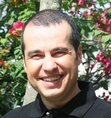Jeremie Averous's Blog, page 33
January 30, 2020
How to Become More Creative in our Professional Life
Valeria Maltoni in her blog ‘How can we Become More Creative at Work?‘ provides useful hints about how to improve creativity in situations which are supposedly quite constrained.
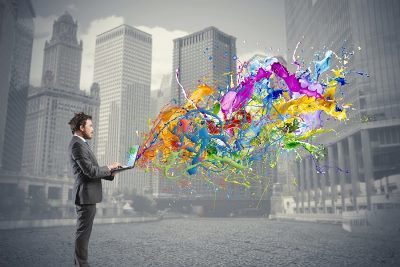
“Judgement is one of the biggest barriers to creativity while curiosity stokes the flames of imagination“, and the issue is clearly to be able to suspend judgment for a while to let creative ideas flourish. In addition being inspired by outsiders coming with a fresh viewpoint, and letting our own creativity express itself, appear to be essential aspects.
From my experience, the most important aspect I believe, is how the requirement for productivity removes the possibility to take time to look laterally. And it is true that I find myself sometimes much too busy, or too focused on achieving some intermediate milestone, to notice things that could be creative opportunities. Not even speaking of dreaming. I find that with smartphones and screens I have lost considerably my day-dreaming time.
Increasing creativity at work is a major issue in a world that is changing more and more frequently. This issue is not sufficiently addressed. Developing a framework to increase joint creativity is essential. What about taking more time to be creative at work?

January 28, 2020
How to Analyze Drama Using the Karpman Triangle
I discovered the concept of the Karpman Triangle as a social model of human interaction – and a useful way to decrypt movie scenarios! This social model of human interaction (formalized in the 1960s) always involves a Victim, a Persecutor and a Rescuer.
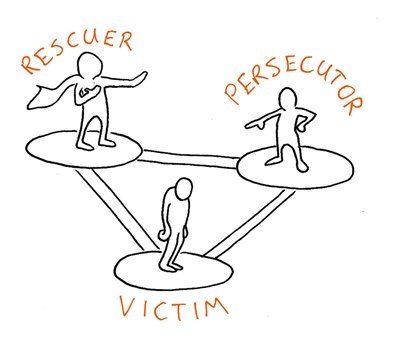
Of course, in the dynamics of social interaction, roles can evolve and change. However the basics remain and it gives a useful analysis tool at least for movie and theater scenarios.
In real life it does apply too and gives an interesting model that can be used for individuals to realize their current posture and how they could switch. “The motivations for each participant and the reason the situation endures is that each gets their unspoken (and frequently unconscious) psychological wishes/needs met in a manner they feel justified, without having to acknowledge the broader dysfunction or harm done in the situation as a whole” (Wikipedia). Therefore, elevating the state of consciousness of the situation can help de-dramatize the situation.
If you are facing a drama, examine whether the Karpman triangle could apply. It is quite a fascinating analysis model for such interactions!

January 25, 2020
How to Overcome the Paradox of Choice
Too much Choice creates paralysis and kills Choice. We can realize that in any restaurant with a too long menu. The excellent TED talk by Barry Schwartz tackles this issue deeper: ‘The paradox of choice‘.
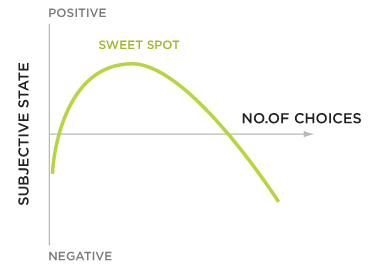
The usual assumption at least in Western societies is that “The more choice people have, the more freedom they have, and the more freedom they have, the more welfare they have.”
Barry Schwartz notes that too much choice leads to choice paralysis, and also to ‘cost of opportunity’ issues (“the attractive features of alternatives that you reject that make you less satisfied with the alternative that you’ve chosen“).
Barry Schwartz goes as far as to attribute the unprecedented increase of clinical depression (and suicide) in our societies to too much choice. Finally, he says, when there was not to much choice, people had lower expectations and that may have been a cause of higher happiness.
I believe that faced with too much choice as we are today, it is still important to maintain low expectations and a mindset of satisfaction with what we have. I understand this is difficult in a world of temptation and where it is easy to depress over the fantastic lives other seem to have on social networks.
The paradox of choice is clearly a major challenge in our societies. The best response seems to be targeted education about how best to behave in such a world – and this seems to be mission in the new generations’ formal life learning.

January 23, 2020
How Easy Modern Technology Makes It For Spies
In this excellent Foreign Policy article ‘the Spycraft Revolution‘ (recommended read although a bit long) the changes in the world of espionnage are described, as well as the challenges faced by those involved in this activity to adapt.
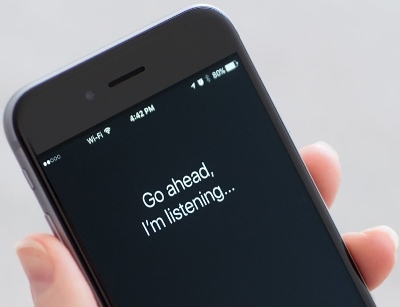
Cover identities are now much harder to forge, as we leave many traces of our past on internet. Closed data societies such as China would seem to have an edge on open data societies like the western world (and authoritarian governments over liberal democracies that limit spying). Counterintelligence can leverage the internet to resist deception. Mobile phones are the most spy-friendly device that has ever been invented, it is an incredible tracking tool, and they can even listen to what’s happening remotely.
“The cloak of anonymity is steadily shrinking“. Still, western intelligence agencies are facing legal hurdles but they may have to be partly removed to allow competition with opponents that don’t have this type of issues. Which leaves society more open to intrusive spying. The right balance has not been defined yet.
“Most of us don’t want to live in a country […] where the intelligence and security agencies are at the heart of public life and political decision-making.” Still we need to be realistic enough to defend ourselves against undue foreign influence. This balance will take time to establish and there will be blunders along the way.

January 21, 2020
How Modern Identification Technology Proves How Unique We Are
Every other week another technology for personal identification crops up. On the latest ones is based on heartbeat, as explained in this MIT Technology review article ‘The Pentagon has a laser that can identify people from a distance—by their heartbeat‘.
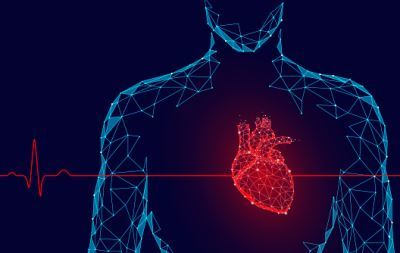
While facial recognition is becoming mainstream and is used in airports and increasingly in the public space, and fingerprints are used almost daily, the stream of unique identification methods continues. Let’s just hope the individual uniqueness is effectively proven and that those methods get certified!
However the point I want to make is that they all show how unique we can be: fingerprints, face, eyes and pupila, DNA, heartbeat… So many aspects that create a unique signature and make us different from other billion individuals…
Soon medicine will also start to become individual based, depending on our genetic variants.
Did you realize how unique you are? And that we all should make better use of this uniqueness instead of trying to get standardized and categorized as cogs of the economy?

January 18, 2020
How Fake News Reflect Collective Fears and Aspirations
Cory Doctorow takes an interesting perspective in his post ‘Fake news is an Oracle: How the falsehoods we believe reveal the truth about our fears and aspirations‘ (the post also refers to the Locus column ‘Cory Doctorow: Fake News Is an Oracle‘. He considers fake news as the emergence of a collective subconscious issue.

Cory Doctorow analyses in detail the myth of science-fiction literature being deemed to be predictive of actual evolution of society. Of course it has an influence, but Cory Doctorow concludes that it is more like a revealing medium for our hidden subconscious collective aspirations and fears. And, he concludes, so are fake news: if they prosper, they do reflect at some point collective fears and aspirations.
Cory Doctorow continues to show that the fact that the anti-vaccination movement and its fake news is so popular has a point in demonstrating that there is an issue about big pharma and its control, beyond the reaction on vaccines themselves.
His view hence is that “Fake news is an instrument for measuring trauma, and the epistemological incoherence that trauma creates – the justifiable mistrust of the establishment“. Therefore, according to him the issue is to “address the underlying corruption that is rotting our society“.
I believe that fake news and other conspiracy theories have always been around, and are just easier to spread. Still I agree with Cory Doctorow that they are revealing subconscious and more conscious issues and are thus interesting to examine and consider. And the core issues once identified certainly need to be addressed.

January 16, 2020
How Important It Is to Get Better Clients
In this post ‘Freelancing is a brave act‘, Seth Godin reminds us that the key as a freelancer is not necessarily to work more, but to get better clients. And I find this does apply to any service activity, at least for small companies.

“Better clients demand more, pay more and talk about your work. Better clients make it easier for you to level up, and better clients challenge you to dig deeper and do what you’re capable of.” In short, it may not be more comfortable working for better clients, but it is definitely more challenging and at the end more rewarding.
Working for better clients creates the seed for becoming masters of our work.
As a freelancer, or as a consultant, “You don’t do better by working more hours. You can’t work more hours. You do better by finding better clients.”
How good are our clients? What about dropping the worse ones and look for better ones?

January 14, 2020
How World Wars reshaped deeply our world and triggered deep changes still felt today
This interesting piece ‘Three Big Things: The Most Important Forces Shaping the World‘ is quite interesting about those forces mentioned, and also on the reflection that much of what we live comes from a reset of the world during World War 2.

Those forces identified in this post shaping our world today:
the demographic shift reconfiguring modern economieswealth inequalityunprecedented access to information leveling social gaps (i.e. the Fourth Revolution)
However the most important part of the article for me is the long description of what our world today owes to WW2. “It’s hard to overstate how much the world reset from 1939 to 1945, and how deeply the changes the war left behind went on to define virtually everything that’s happened since.” As examples: the baby-boom, antibiotics, all sorts of technological advances (nuclear, jet engines, social changes triggered by war economy, GI bill and higher education, and also the social net in European countries…).
Internet at the end was a technology that evolve as a result of Cold War and the need to preserve communication in case of nuclear attack. And Cold War was in itself an intermediate consequence of WW2.
We too often fail to go back sufficiently in time to understand the deep drivers of our societies. It is worth sometimes going back a century to grasp those large trends and what triggered social changes that astonish us today.

January 11, 2020
How We Need to Set Rules for Biohacking
Biohacking (using drugs and technology to make one’s body/mind function better) is trendy. In this post ‘Biohacking Gone Wild‘, some interesting examples are given – from simple examples we all are actually using, to extreme hacking.
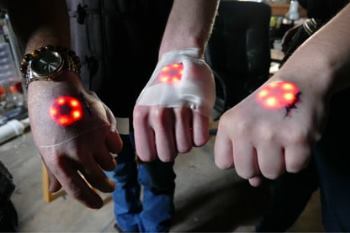
We’ve been doing biohacking in its widest senses for ages, for example when we are wearing glasses.
Some modern examples are quite frightening: “It’s estimated that over 100,000 people already have various types of implants. In Sweden, thousands of Swedes are inserting chips under their skin to speed up their daily routines. They use chips to open locked doors, to store contact information, and to get on to the train“
We do, and we will obviously progressively extend our capabilities using technology of some sort. I do think there are some limits that should only be exceeded with care. For me, anything changing my body chemistry for example, is for me clearly out-of-bounds. Using prosthetics adding capabilities to my body can be discussed as long as it can be shut down, removed, or only put on when needed. Not to mention personal data protection.
Biohacking is just starting, and it will pervade the world of the Collaborative Age. What rules should we put in place to keep it within reasonable bounds?

January 9, 2020
How We Should Learn to Produce Scrappy
I love this post by Seth Godin ‘‘Scrappy’ is not the same as ‘crappy’‘. Seth is an advocate of shipping fast, as soon as it is presentable (a ‘minimum viable product’ approach of sorts). We should still not ship crappy stuff, but his view is that scrappy is good enough.
 scrappy
scrappy“The only choice is to launch before you’re ready. Before it’s perfect. Before it’s 100% proven to be no risk to you.”
Seth then introduces the concept of scrappy: “Scrappy means that while it’s unpolished, it’s better than good enough.”
It is always tough to know whether what we put in the spotlight of public interest is good enough or whether we are spending too much time trying to polish it. I love the scrappy approach. Another measure to show to the world what you are doing earlier than what you thought.


